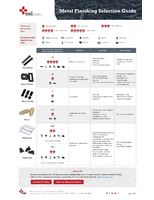Construction Spending Report shows nonresidential spending slip.
Press Release Summary:
According to May 1 construction spending report by U.S. Census Bureau, nonresidential construction spending declined 2.9% in March. Year-over-year total nonresidential construction spending is down 1.2%, and total nonresidential construction spending stands at $555.08 billion on annual basis. Respectively, private and public segments registered monthly declines of 1.5% and 4.5% in construction spending. Residential construction spending was up 0.7% for month and 17.8% year-over-year.
Original Press Release:
Nonresidential Construction Spending Slips 2.9 Percent in March
"Private nonresidential construction spending declined 1.5 percent for the month, but leading construction indicators generally remain positive, suggesting that improved performance is still possible later this year." —ABC Chief Economist Anirban Basu.
Summary
The nation’s nonresidential construction spending declined 2.9 percent in March, according to the May 1 construction spending report by the U.S. Census Bureau. On a year-over-year basis, total nonresidential construction spending is down 1.2 percent, indicating that recovery continues to elude this segment of the economy. Total nonresidential construction spending stands at $555.08 billion on an annualized basis.
Both private and public segments registered monthly declines in construction spending. Private nonresidential construction spending fell 1.5 percent for the month, but is still 2.8 percent higher than one year ago. Public nonresidential construction spending slipped 4.5 percent in March and is down 5.5 percent on a year-over-year basis.
Thirteen of the 16 nonresidential construction subsectors experienced spending declines in March, including sewage and waste disposal, down 10.4 percent; water supply, down 6.4 percent; public safety, down 5.9 percent; conservation and development, down 5.4 percent; and highway and street, down 5.1 percent. Many of these segments also are associated with significant year-over-year spending decreases, including sewage and waste disposal, down 18.8 percent and public safety, down 14.3 percent.
Only three subsectors reported monthly gains: lodging, up 1.6 percent; religious, up 2 percent; and communication, up 4.5 percent. On a year-over-year basis, the largest gains were registered in transportation, up 19.1 percent, and lodging, up 11.6 percent.
In contrast to nonresidential construction activity, residential construction spending was up 0.7 percent for the month and was 17.8 percent higher on a year-over-year basis. Overall, total construction spending – which includes both nonresidential and residential construction – was down 1.7 percent, but is up 4.8 percent relative to March 2012 levels.
Analysis
“To a certain extent, today’s release reinforces the pre-existing trend,” said ABC Chief Economist Anirban Basu. “A number of segments associated with public financing have been in decline for quite some time and those declines persisted in March. Among the hardest-hit categories have been water supply, public safety, and sewage and waste disposal – segments that depend heavily on state and local government spending.
“However, there is weakness creeping into many private segments as well,” Basu said. “Overall, private nonresidential construction spending declined 1.5 percent for the month, an indication that many developers and their financiers remain hesitant. That said, leading construction indicators generally remain positive, suggesting that improved performance is still possible later this year.
“Unfortunately, the overall economy appears set to decelerate during the second quarter,” Basu said. “Should the economy slow down as much as it did during the previous second quarter, it is unlikely that the construction leading indicators will remain so positive. Although questions remain regarding the ultimate impact of sequestration and still-fragile state and local government budgets, the consensus forecast calls for ongoing economic recovery in 2013.”




